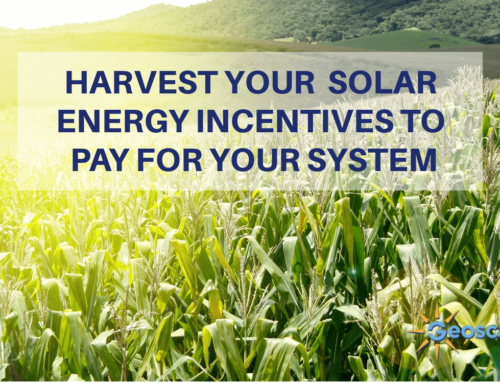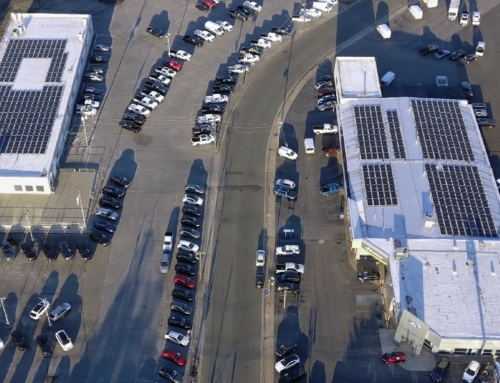Simply put, Solar Renewable Energy Credits (SRECs) are a specialized form of Renewable Energy Certificates (RECs) that allow organizations to track—and potentially profit from—the amount of clean, renewable energy produced by commercial solar power systems. SRECs exist in states that have specific mandates for generating solar energy. The more electricity produced, the more Solar Renewable Energy Credits issued. These credits can be bought and sold in an open market setting and are considered the currency of renewable energy. Many organizations choose to sell these credits to help offset the cost of installing and maintaining a renewable energy system.
SRECs are important because electricity generated by a traditional power plant is exactly the same as the electricity entering the grid from clean, renewable energy sources. Electrons are electrons, and your breakroom coffee maker doesn’t know if it’s getting its juice from fossil fuel-generated power or from a renewable energy source. SRECs play a critical role in the accounting, tracking and proof of ownership of the benefits of renewable solar energy. Here are ten questions that help illuminate how and why SRECs work for businesses:
1. IF AN SREC IS A SPECIALIZED FORM OF AN REC… THEN WHAT’S AN REC?
Renewable Energy Certificates (RECs) are issued for every Megawatt hour (MWh) produced by qualifying renewable energy sources (1MWh = 1 REC). RECs and SRECs also include the environmental and other non-power attributes of renewable energy production. The value of these attributes can be “bundled” or “unbundled” from the electricity sold. Electricity has a tangible value to consumers: the price of keeping the lights on. Electricity produced from renewable resources has additional, less tangible value in the form of reduced greenhouse gases and other benefits to society and the world. RECs help monetize these non-energy attributes.
2. WHAT IS THE DIFFERENCE BETWEEN A SOLAR RENEWABLE ENERGY CREDIT AND A SOLAR RENEWABLE ENERGY CERTIFICATE?
There is no difference between what a credit and a certificate represent. Different states and organizations just use different terminology. It gets even more fun when you start talking about RECs, which can also be called Green Tags, Renewable Energy Credits, Renewable Electricity Certificates or Tradable Renewable Certificates. No matter what the label, each represents 1 MWh of renewable energy production.
3. HOW DID SRECS COME TO BE?
RECs were created as a way to account for electricity generated from renewable energy projects. They become relevant, for example, in states that have regulations known as Renewable Portfolio Standards (RPS). These are state laws requiring utilities to certify that a specific percentage of the energy they deliver comes from renewable sources. RECs represent proof that the utility has either generated the renewable electricity independently or purchased the right to have the clean power generated by a separate green energy producer, which counts towards its renewable energy percentage. This system allows utilities to, in essence, pair the positive attributes of renewable energy with the electricity they already sell. SRECs are a special form of REC that specifies solar as the renewable energy source—satisfying some states’ requirements that a specific percentage of delivered energy comes from solar sources.
4. HOW ARE SRECS SOLD?
It is possible for SRECs to be traded directly between buyer and seller however, this approach requires a more sophisticated understanding of markets and trading. Many SREC holders choose to sell their certificates to third-party marketers, brokers or asset managers who package and resell bundles of SRECs to utilities—allowing them to meet their RPS obligations.
5. WHAT IS THE MARKET FOR THESE CREDITS?
Mandatory RPS programs (see question 3) currently appear in a majority of U.S. states and territories, with a number of states setting voluntary renewable energy standards or goals. SRECs (and RECs) provide a vehicle for satisfying these renewable energy obligations and goals, thus creating voluntary and compliance markets for these green certificates.
Voluntary markets offer a way for businesses and individuals to support renewable energy to meet private or corporate social responsibility goals. Compliance markets are more structured and offer a vehicle for buyers to meet state-mandated obligations. Generally, compliance RECs/SRECs must originate within a specific geographic area to satisfy RPS mandates. Voluntary RECs/SRECs, however, can be sourced regionally or nationally. Compliance SREC markets are relatively limited, appearing in only a handful of states.
6. WHAT IF THERE IS NO SREC MARKET IN MY STATE?
Nationwide voluntary markets could be an option. Buyers of nationally sourced voluntary SRECs often include major corporations with green energy goals for facilities located in different areas of the country. Other benefits of adopting sustainable business practices can include increased brand loyalty, sales, market share and employee pride. Therefore, a company with a large onsite solar installation might simply choose to retain (and retire) the SRECs generated from its system in support of its own green energy goals.
7. HOW MUCH ARE SRECS WORTH?
The value of SRECs is a function of several factors, including supply and demand, the vintage (the year the renewable energy was generated) and RPS compliance regulations. In states with high regulatory penalties for failing to meet RPS requirements, the price of SRECs can be higher because of the higher price cap created as a result. Conversely, if the penalty is less than the cost of the SRECs, there would be no financial incentive to pay a higher price. For obvious reasons, SRECs will be less valuable in states where no mandate exists. And in some areas, state-sponsored rebate programs make it more financially attractive to redeem SRECs, rather than sell them. SREC value, and the affecting variables, will likely fluctuate over time. So it’s difficult to predict future SREC value.
8. WHAT IS ACTUALLY EXCHANGED WHEN SOLAR RENEWABLE ENERGY CREDITS ARE TRADED?
A unique identification number is assigned to each SREC generated, which is then tracked electronically. SREC owners can register these solar “certificates” and trade them on the open market. Many SREC holders choose to sell their certificates to third-party aggregators (see question 4) who package bundles of SRECs to resell. A small fee is charged for the convenience, but going this route eliminates a lot of paperwork and avoids some market risk. Reputable solar equipment providers can help identify such SREC aggregators.
9. HOW ARE SRECS VERIFIED?
While there is no national system for REC verification, each state with an RPS (see question 3) generally has a verification protocol. Third-party verification can also help ensure RECs (that are bought and sold) live up to environmental claims. The Center for Resource Solutions’ Green-e Verification program is one avenue for certifying green power products. In addition to environmental claims, certification also reviews ethical standards, including marketing claims by renewable energy producers.
10. HOW ARE SOLAR RENEWABLE ENERGY CREDITS TRACKED?
Once an SREC is sold, tracing its path of ownership may be accomplished using one of the following approaches: “certificate-based tracking” or the “contract-path tracking method.”
The certificate-based approach is an electronic tracking system that allows RECs to be transferred between account holders, much like currency is exchanged within online banking systems.
The contract-path method is older but still widely used, and it traces the chain of ownership for each item in a buyer’s green power portfolio.
Both tracking methods help guarantee that each REC is claimed only once. When a utility applies a group of certificates against its RPS obligation, the SRECs (and their corresponding identification numbers) are retired.
This post originally appeared on the SunPower Resources Blog







